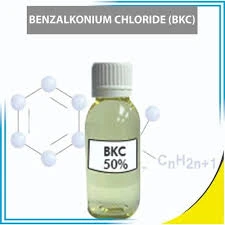polyacrylamide flocculant water treatment
Polyacrylamide Flocculant in Water Treatment An Overview
Water pollution is a global concern, necessitating effective treatment methods to ensure the safety and usability of water resources. One of the most significant advancements in this field is the use of polyacrylamide (PAM) flocculants, which play a crucial role in water treatment processes. This article explores the characteristics, mechanisms, applications, and benefits of using polyacrylamide flocculants in water treatment.
What is Polyacrylamide?
Polyacrylamide is a water-soluble polymer formed from acrylamide monomers. It is primarily known for its ability to bind with suspended particles in water, facilitating their removal through sedimentation or filtration. PAM can be produced in several forms, including anionic, cationic, and non-ionic, each tailored for specific applications in water treatment.
Mechanisms of Action
The effectiveness of polyacrylamide flocculants is primarily attributed to their structure and charge characteristics. When introduced into a wastewater system, PAM molecules adsorb onto the surface of suspended particles, such as silt, clay, and organic matter. The charged nature of the flocculant interacts with the oppositely charged particles, leading to the formation of larger aggregates, or flocs. These flocs are significantly heavier than individual particles, allowing them to settle more quickly to the bottom of the treatment vessel for easy removal.
The flocculation process typically involves several stages, including 1. Coagulation Initial destabilization of suspended particles. 2. Flocculation Aggregation of those destabilized particles into larger flocs. 3. Sedimentation Settling of flocs for separation from the treated water.
polyacrylamide flocculant water treatment

Applications in Water Treatment
Polyacrylamide flocculants are widely used in various water treatment scenarios - Municipal Water Treatment PAM serves to clarify drinking water by removing turbidity and contaminants, ensuring the safety and quality of municipal supplies. - Wastewater Treatment In industrial settings, PAM is invaluable for treating wastewater, particularly in processes such as sludge dewatering and mining operations where high loads of solid waste are common. - Agriculture PAM application in irrigation systems assists in reducing soil erosion and improving water retention capacity, indirectly benefiting water quality by managing runoff. - Oil and Gas Industry PAM is increasingly utilized for enhancing oil recovery techniques and managing produced water.
Advantages of Using Polyacrylamide Flocculants
The choice of polyacrylamide as a flocculant in water treatment offers several benefits 1. Efficiency PAM flocculants demonstrate high efficiency in aggregating particles, leading to faster and more effective sedimentation. 2. Cost-Effectiveness The use of polyacrylamide can reduce the need for extensive filtering equipment and chemical agents, lowering operational costs. 3. Customized Formulations The ability to adjust the charge density and molecular weight of PAM allows for tailored solutions to meet specific water treatment needs. 4. Eco-Friendly Options Biodegradable polyacrylamide variants are available, making PAM a suitable choice for environmentally conscious applications.
Conclusion
In summary, polyacrylamide flocculants are an essential component of modern water treatment systems. Their ability to effectively remove suspended solids and improve water clarity makes them invaluable in municipal, industrial, and agricultural settings. As we continue to confront the challenges of water pollution and scarcity, the application of PAM in various treatment processes will undoubtedly play a significant role in ensuring the availability of clean and safe water for generations to come. Continued research and development in this field will further enhance the efficiency and environmental compatibility of polyacrylamide flocculants, cementing their place in sustainable water management practices.
-
Water Treatment with Flocculant Water TreatmentNewsJun.12,2025
-
Polymaleic AnhydrideNewsJun.12,2025
-
Polyaspartic AcidNewsJun.12,2025
-
Enhance Industrial Processes with IsothiazolinonesNewsJun.12,2025
-
Enhance Industrial Processes with PBTCA SolutionsNewsJun.12,2025
-
Dodecyldimethylbenzylammonium Chloride SolutionsNewsJun.12,2025





